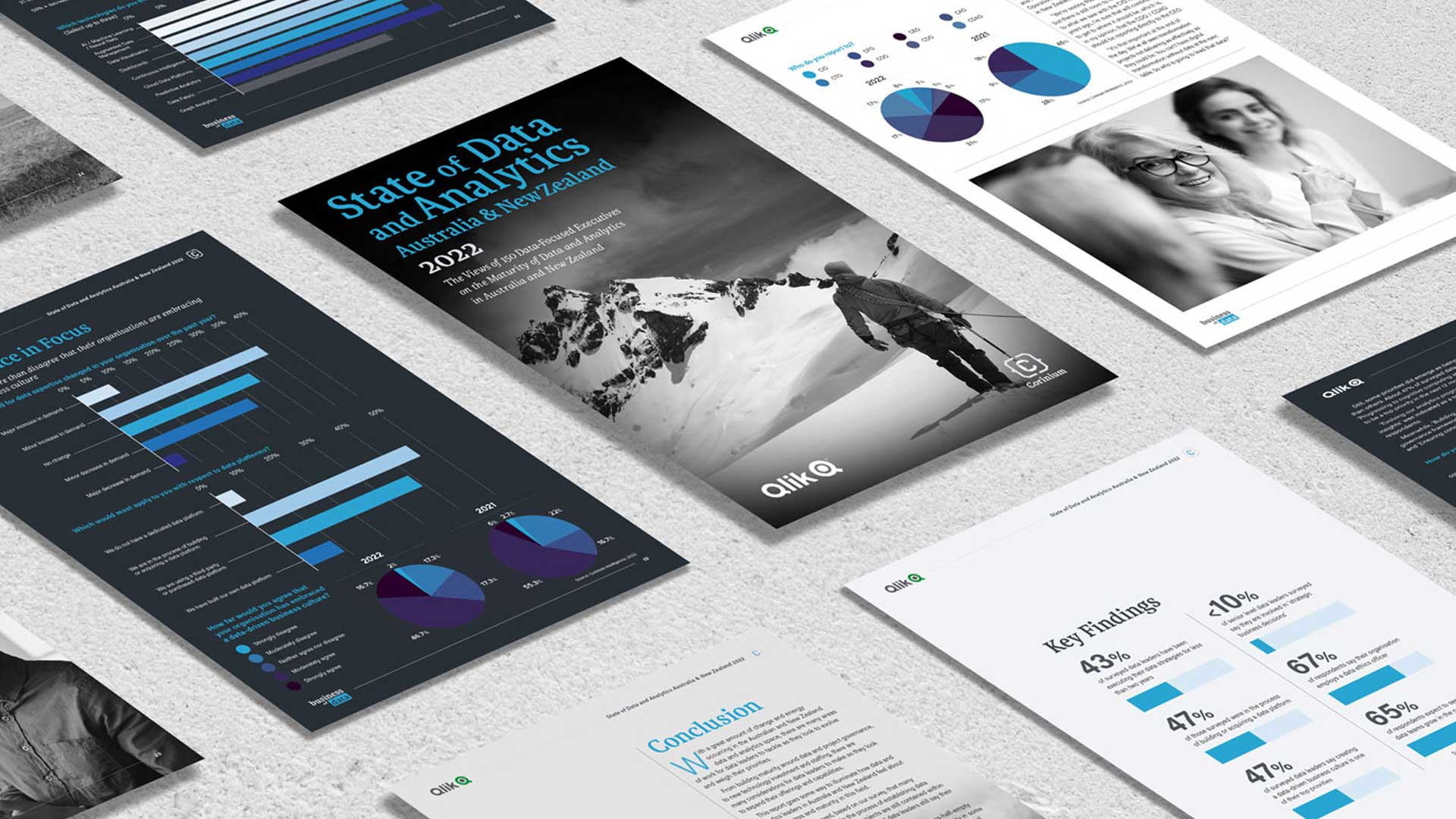How has the Demand for Data Expertise Changed in Australia and New Zealand?

Survey findings also examine the influence of analytics on organisations
The demand for expertise in the field of data and analytics remains in Australia and New Zealand, and for some organisations it is still increasing.
Last year we produced our first regional State of Data and Analytics Australia and New Zealand report. We surveyed 150 data and analytics leaders across both countries to gauge the maturity of their teams and organisations in this space.
This year we returned with more questions and more data for the State of Data and Analytics, Australia and New Zealand 2022. This article references that research.
Last year we reported that 60% of survey respondents observed an increase in demand for data and analytics expertise. The COVID-19 pandemic had shattered the relevancy of three and five-year plans and budgets, so pressure was on analytics teams to deliver timely insights and reporting.
While we didn’t ask questions related to the impact that COVID-19 has had on data and analytics departments this year, it’s worth keeping the pandemic in mind when reviewing the changing demand for data and analytics.
This year, 43% of respondents say demand for data expertise has increased over the past year. A closer look shows that 36% of respondents have seen a minor increase in demand, and just over 7% report a major increase in demand.
Just over 27% of respondents say there has been a decrease in demand for data expertise in the past year, with 24% reporting that decrease as minor. Just over 3% call it a major decrease in demand, while 29% of respondents report no change in demand.

Demand for data and analytics expertise may not have increased as much as it did in the middle of the pandemic. However, for more respondents than not, that demand is still going up. Perhaps some of the demand for data and analytics expertise seen in last year’s State of Data and Analytics Australia and New Zealand report has either been met or remains unchanged.
We also asked survey respondents how long their organisation had been executing their data strategies for, with interesting results.
About 43% of respondents indicate they have been executing their data strategies for less than two years. A further 20% report they are still in the planning stages, while 4% have not started.
Only about 33% of respondents have been executing their data strategies for more than two years, with about 27% reporting they have been doing so for between two and five years, while just 6% say they have been executing for more than five years.

This would suggest that many data strategies are still fairly new, and perhaps tied to the pandemic.
“In the last two to three years with COVID, data and analytics has really been brought to the forefront to shape enterprise strategy, identify and capitalise business drivers, and optimise business operations. Businesses would often do forecasting or five-year planning, but when COVID happened that was thrown out,” says Brendan Mathias, Director of Marketing Analytics for Cochlear.
“The business had to look to data and analytics to drive new understandings as intelligence within the business was insufficient to guide decision-making. That’s where data and analytics became the pilot rather than the co-pilot. Previously, business leaders had their own expectations of how things were going, and they would use data and analytics as a soundboard to validate or temper those assumptions.
“Now, businesses have to both internally and externally identify trends. That’s where analytics is more in the driver’s seat, because if you don’t have data-driven decision-making, you’re running blind. So many CEOs are now talking about data and analytics as being their number one business asset, you wouldn’t have heard that five years ago.”

Data Influence and Platforms
The demand for data and analytics expertise remains strong, and data strategies are being switched on. So, what kind of influence do these programs have on the wider business?
We asked our 150 respondents how much influence analytics has on the wider business, with four possible answers ranging from Low to Very High.
The majority answer was ‘Intermediate’, selected by 54% of respondents. This level of influence is described as ‘Offering insights to other departments’.
For 38% of respondents, analytics has a ‘High’ influence on the business. This answer is elaborated on as meaning the data team offers insights and recommendations based on their findings.
Just over 7% of respondents reported that analytics had a ‘Very high’ influence on the business. This option is defined as having analytics teams involved in strategic business decisions.
The ‘Low’ influence level, described as, ‘We provide basic information’ was nominated by less than 1% of respondents.

With more than half of data and analytics leaders surveyed indicating that their level of influence across the organisation is ‘Intermediate’, it is suggested that there remains a lot of work to do before these organisations are truly considered data-driven.
To learn more about the maturity of the data and analytics environments our respondents work with and within, we also asked about their use of data platforms, the technology solutions for collecting, storing, managing, analysing and delivering data.
Almost 47% of those surveyed say they are in the process of building or acquiring a data platform.
About 39% of respondents say they are using a third-party or purchased data platform, while 9% say they have built their own data platform. Just under 5% of survey respondents report having no dedicated data platform.
Building or acquiring data platforms is a considerable investment of time and capital, so it’s encouraging to see almost half of respondents say they are in the middle of this process and on their way to having a dedicated data environment.
Joe DosSantos, Chief Data and Analytics Officer for cloud data platform provider Qlik, says in addition to technology investment, driving business with data is about finding appropriate applications in a timely manner.
“People in the data and analytics industry often think about a special moment where everything comes together, and you start using analytics and have data-literate organisations. When, in fact, the companies that are doing this right are making meaningful incremental progress against use cases that matter,” he says.
“The key is trying to monetise important business moments one at a time and making business heroes. Perhaps it is the chief marketing officer because you need to have campaign responses go up, or a sales leader because you need higher throughput, maybe it’s in customer success because you need to stem attrition.
“By making heroes out of certain business executives and putting analytics into specific operations, you will improve performance. If you do that enough times you will eventually realise that you’ve created a meaningful, enterprise-wide program.
“One of the important dynamics that allows that to happen today is the world of cloud and consumption-based computing. You can consume resources in much smaller pieces and pay for only what you need. You don’t have to make huge capital investments in something like, for example, a Hadoop cluster that five years ago would be a multi-million dollar investment to get started.”



